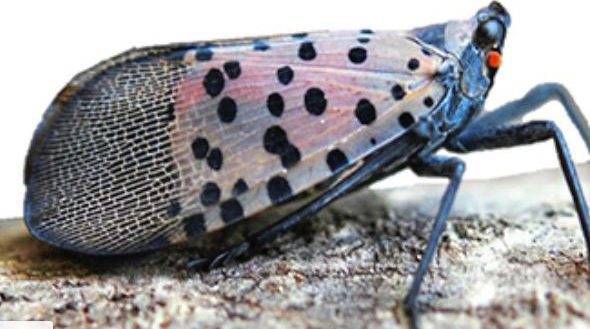Spotted lanternfly lands in Western Pa.; Allegheny, Beaver on list of quarantined counties
Western Pennsylvania residents are in for a rude awakening if the spotted lanternfly becomes as pervasive here as it is in the eastern part of the state.
“Pittsburgh doesn’t yet understand the nuisance factor,” said Shannon Powers, spokeswoman for the Pennsylvania Department of Agriculture. “It’s an incredible nuisance when you’re trying to enjoy anything outside.”
Until now, the invasive insect, first detected in Berks County in 2014, has been confined to 14 counties in southeastern Pennsylvania. But a move westward, inadvertently aided by humans, has been under way.
This week, the Department of Agriculture added Allegheny and Beaver counties to the spotted lanternfly quarantine zone ahead of the spring hatch, making them the first Western Pennsylvania counties to be included. Ten other counties also were added, bringing the total number under quarantine to 26.
“Realistically, this is a bug that’s here to stay,” said Heather Leach, extension associate with the Penn State Department of Entomology. “It’s really difficult to eradicate something when you’re dealing with such high population levels.”
Leach said the spotted lanternfly has a voracious appetite and especially favors an invasive species of tree known as the tree of heaven, which grows along roadways and railroads and facilitates movement of the insect.
The erratic nature of the quarantine, with several western counties skipped over, suggests that the insect has been “hitchhiking” on vehicles, Powers said.
“The insect is not spreading on its own — it’s clearly getting help from people,” she said. “It can fly short distances, but it cannot travel that far on its own.”
The new counties are not completely infested but rather have a few municipalities with a known infestation, which led to a quarantine being placed on the entire county “out of an abundance of caution,” the agriculture department said.
Municipalities in Allegheny County that are considered infested include Pittsburgh, Monroeville, North Versailles, Wall and Wilmerding, Powers said. In Beaver County, the infested municipalities are Conway, Baden and Economy.
“Most of these municipalities have already been aggressively treated,” said Ruth Welliver, director of the state Bureau of Plant Industry. “With continued aggressive treatment and monitoring, and an actively engaged community, we can strike spotted lanternfly from these counties.”
In the cases of Conway and Pittsburgh, eggs were found near a railyard. “It was clear the insects traveled there, hopped off and laid their eggs,” Powers said.
The eggs were found late last year by Department of Agriculture personnel who were following up on a reported sighting. “The only treatment we could do was scrape the egg masses,” she said.
Native to Asia, the spotted lanternfly lays eggs in masses of 30 to 50, which usually hatch in mid-May. The adult life cycle usually lasts until late fall or early winter.
Powers said it’s critical that Western Pennsylvania residents know what the spotted lanternfly looks like in its four stages and assist with its eradication. When dealing with egg masses, which look like a smear of mud, “scrape and squish” is the best policy, she said.
“They are on fences, trees, rocks, outdoor equipment, outdoor furniture. When you’re cleaning up your property this spring, keep an eye out for them,” she said.
Sightings at any stage of its life cycle should be reported to Penn State Extension by calling 888-422-3359 or going online.
“Within seven days (of a report), we will send out a team to survey the surrounding area,” Powers said.
Extension of the quarantine also means that businesses that move products and vehicles in and out of the quarantine zone must obtain a spotted lanternfly permit from the Department of Agriculture.
For example, a tax preparation business whose employees drive to work and stay in the office all day does not need a permit. But a potato chip company that ships product outside the quarantine zone does, according to Penn State Extension.
The agriculture department has issued an estimated 1 million permits to 22,000 businesses in Pennsylvania and other states, Powers said. The permit is free and can be obtained by taking an online course.
After a person successfully completes the course, he or she is considered a trainer and can train other employees on what to look for and how to safeguard against transporting the spotted lanternfly, Powers said.
The pest threatens Pennsylvania’s grape, tree fruit, hardwood and nursery industries, which collectively are worth about $18 billion to the state’s economy, Powers said.
“It has already been devastating to the wine industry in southeastern Pennsylvania,” she said.
What’s more, a recent Penn State study found that the insect could drain the state economy of $324 million annually and cause the loss of about 2,800 jobs.
Remove the ads from your TribLIVE reading experience but still support the journalists who create the content with TribLIVE Ad-Free.





